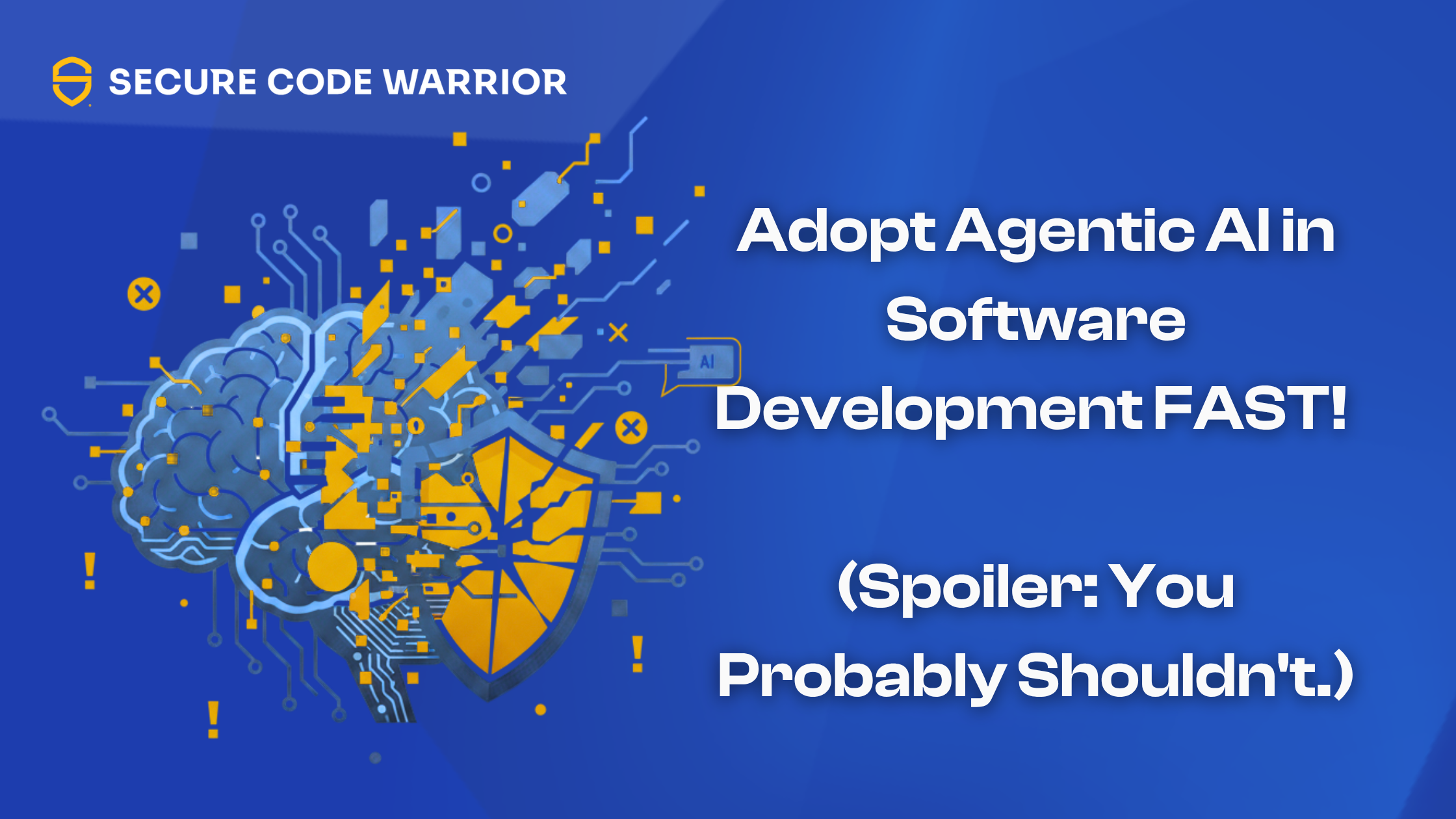
Navigating the blueprints of secure coding: A construction analogy
Did you know that 67% of developers admit to shipping code with vulnerabilities? Imagine a team of construction workers tasked with building a house. They have all the materials and tools they need, but they are struggling to follow the blueprints and building codes. As a result, they are making mistakes and the house is not being built to code.
This analogy can be used to illustrate the challenges that developers face when trying to practice secure coding. Just as construction workers need to follow blueprints and building codes to ensure that their houses are safe, developers need to follow secure coding practices to ensure that their software applications are secure.
There are a number of reasons why secure coding can be challenging. These include:
- A lack of awareness of secure coding practices. 86% of developers state they find it challenging to practice secure coding.
- A lack of time and resources. 24% of respondents in our survey stated ‘not enough time’ is the biggest impediment to integrating secure code.
- The complexity of secure coding. 63% of developers rate writing secure code that is free from vulnerabilities to be difficult.
- Over reliance upon tools. 57% of application security teams are utilizing six or more tools to discover vulnerabilities during the DevSecOps lifecycle. (GitLab, 2023)
However, despite the challenges, secure coding is essential. By following secure coding practices, developers can help to protect their applications from vulnerabilities that can be exploited by attackers. Just as a well-built house is less likely to collapse, a well-coded application is less likely to be hacked.
Here are a few tips for developers who want to improve their secure coding practices:
- Get training and education on secure coding. There are a number of resources available to help developers learn about secure coding practices.
- Use static analysis tools to identify vulnerabilities in code. Static analysis tools can help to identify vulnerabilities in code that may be difficult to find manually.
- Write code that is easy to review and understand. Code that is easy to review and understand is more likely to be secure code.
- Test code thoroughly. Testing code can help to identify and fix vulnerabilities before they are exploited.
Interested in learning more? Unlock the secrets to developing an agile secure coding strategy with our secure code learning blueprint.


By following secure coding practices, developers can help to protect their applications from vulnerabilities that can be exploited by attackers. Just as a well-built house is less likely to collapse, a well-coded application is less likely to be hacked.

Secure Code Warrior is here for your organization to help you secure code across the entire software development lifecycle and create a culture in which cybersecurity is top of mind. Whether you’re an AppSec Manager, Developer, CISO, or anyone involved in security, we can help your organization reduce risks associated with insecure code.
Book a demoDave Karp is the VP of Solution Engineering and Technical Alliances at Secure Code Warrior.


Did you know that 67% of developers admit to shipping code with vulnerabilities? Imagine a team of construction workers tasked with building a house. They have all the materials and tools they need, but they are struggling to follow the blueprints and building codes. As a result, they are making mistakes and the house is not being built to code.
This analogy can be used to illustrate the challenges that developers face when trying to practice secure coding. Just as construction workers need to follow blueprints and building codes to ensure that their houses are safe, developers need to follow secure coding practices to ensure that their software applications are secure.
There are a number of reasons why secure coding can be challenging. These include:
- A lack of awareness of secure coding practices. 86% of developers state they find it challenging to practice secure coding.
- A lack of time and resources. 24% of respondents in our survey stated ‘not enough time’ is the biggest impediment to integrating secure code.
- The complexity of secure coding. 63% of developers rate writing secure code that is free from vulnerabilities to be difficult.
- Over reliance upon tools. 57% of application security teams are utilizing six or more tools to discover vulnerabilities during the DevSecOps lifecycle. (GitLab, 2023)
However, despite the challenges, secure coding is essential. By following secure coding practices, developers can help to protect their applications from vulnerabilities that can be exploited by attackers. Just as a well-built house is less likely to collapse, a well-coded application is less likely to be hacked.
Here are a few tips for developers who want to improve their secure coding practices:
- Get training and education on secure coding. There are a number of resources available to help developers learn about secure coding practices.
- Use static analysis tools to identify vulnerabilities in code. Static analysis tools can help to identify vulnerabilities in code that may be difficult to find manually.
- Write code that is easy to review and understand. Code that is easy to review and understand is more likely to be secure code.
- Test code thoroughly. Testing code can help to identify and fix vulnerabilities before they are exploited.
Interested in learning more? Unlock the secrets to developing an agile secure coding strategy with our secure code learning blueprint.

Did you know that 67% of developers admit to shipping code with vulnerabilities? Imagine a team of construction workers tasked with building a house. They have all the materials and tools they need, but they are struggling to follow the blueprints and building codes. As a result, they are making mistakes and the house is not being built to code.
This analogy can be used to illustrate the challenges that developers face when trying to practice secure coding. Just as construction workers need to follow blueprints and building codes to ensure that their houses are safe, developers need to follow secure coding practices to ensure that their software applications are secure.
There are a number of reasons why secure coding can be challenging. These include:
- A lack of awareness of secure coding practices. 86% of developers state they find it challenging to practice secure coding.
- A lack of time and resources. 24% of respondents in our survey stated ‘not enough time’ is the biggest impediment to integrating secure code.
- The complexity of secure coding. 63% of developers rate writing secure code that is free from vulnerabilities to be difficult.
- Over reliance upon tools. 57% of application security teams are utilizing six or more tools to discover vulnerabilities during the DevSecOps lifecycle. (GitLab, 2023)
However, despite the challenges, secure coding is essential. By following secure coding practices, developers can help to protect their applications from vulnerabilities that can be exploited by attackers. Just as a well-built house is less likely to collapse, a well-coded application is less likely to be hacked.
Here are a few tips for developers who want to improve their secure coding practices:
- Get training and education on secure coding. There are a number of resources available to help developers learn about secure coding practices.
- Use static analysis tools to identify vulnerabilities in code. Static analysis tools can help to identify vulnerabilities in code that may be difficult to find manually.
- Write code that is easy to review and understand. Code that is easy to review and understand is more likely to be secure code.
- Test code thoroughly. Testing code can help to identify and fix vulnerabilities before they are exploited.
Interested in learning more? Unlock the secrets to developing an agile secure coding strategy with our secure code learning blueprint.

Click on the link below and download the PDF of this resource.
Secure Code Warrior is here for your organization to help you secure code across the entire software development lifecycle and create a culture in which cybersecurity is top of mind. Whether you’re an AppSec Manager, Developer, CISO, or anyone involved in security, we can help your organization reduce risks associated with insecure code.
View reportBook a demoDave Karp is the VP of Solution Engineering and Technical Alliances at Secure Code Warrior.
Did you know that 67% of developers admit to shipping code with vulnerabilities? Imagine a team of construction workers tasked with building a house. They have all the materials and tools they need, but they are struggling to follow the blueprints and building codes. As a result, they are making mistakes and the house is not being built to code.
This analogy can be used to illustrate the challenges that developers face when trying to practice secure coding. Just as construction workers need to follow blueprints and building codes to ensure that their houses are safe, developers need to follow secure coding practices to ensure that their software applications are secure.
There are a number of reasons why secure coding can be challenging. These include:
- A lack of awareness of secure coding practices. 86% of developers state they find it challenging to practice secure coding.
- A lack of time and resources. 24% of respondents in our survey stated ‘not enough time’ is the biggest impediment to integrating secure code.
- The complexity of secure coding. 63% of developers rate writing secure code that is free from vulnerabilities to be difficult.
- Over reliance upon tools. 57% of application security teams are utilizing six or more tools to discover vulnerabilities during the DevSecOps lifecycle. (GitLab, 2023)
However, despite the challenges, secure coding is essential. By following secure coding practices, developers can help to protect their applications from vulnerabilities that can be exploited by attackers. Just as a well-built house is less likely to collapse, a well-coded application is less likely to be hacked.
Here are a few tips for developers who want to improve their secure coding practices:
- Get training and education on secure coding. There are a number of resources available to help developers learn about secure coding practices.
- Use static analysis tools to identify vulnerabilities in code. Static analysis tools can help to identify vulnerabilities in code that may be difficult to find manually.
- Write code that is easy to review and understand. Code that is easy to review and understand is more likely to be secure code.
- Test code thoroughly. Testing code can help to identify and fix vulnerabilities before they are exploited.
Interested in learning more? Unlock the secrets to developing an agile secure coding strategy with our secure code learning blueprint.
Table of contents

Secure Code Warrior is here for your organization to help you secure code across the entire software development lifecycle and create a culture in which cybersecurity is top of mind. Whether you’re an AppSec Manager, Developer, CISO, or anyone involved in security, we can help your organization reduce risks associated with insecure code.
Book a demoDownloadResources to get you started
Threat Modeling with AI: Turning Every Developer into a Threat Modeler
Walk away better equipped to help developers combine threat modeling ideas and techniques with the AI tools they're already using to strengthen security, improve collaboration, and build more resilient software from the start.










.png)


.avif)
.png)



